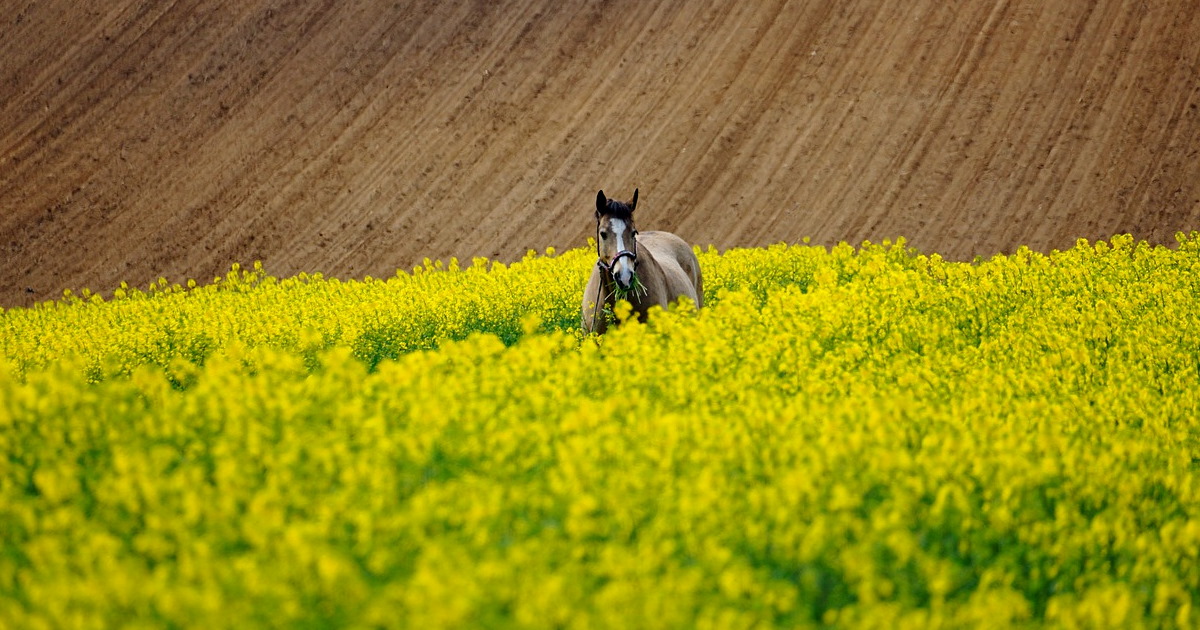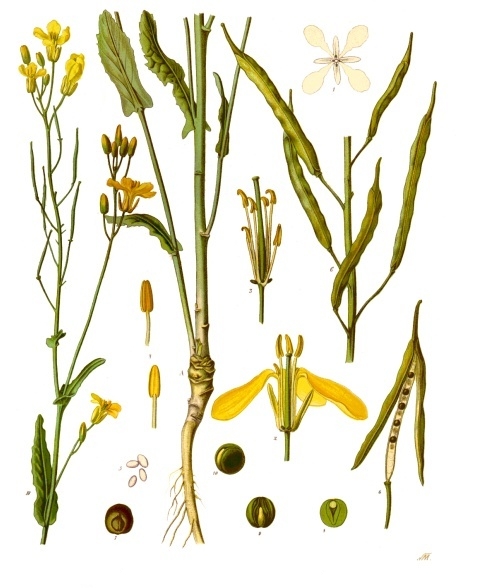
The many uses of Colza
What's in a name –
The term 'rapeseed' comes from the Latin Brassica napus L. and belongs to the Brassicaceae family, formerly called crucifers. The corolla of the colza flower is made up of four petals which are arranged in the form of a cross, hence crucifer. Other plants in the Brassicaceae family include mustard, Brussels sprouts, cauliflower, broccoli, kale, collards...
Spring in many parts of Europe brings landscapes quilted with the gently waving crops in an explosive sea of yellow. Vendée is no exception and makes for drives through a countryside that never stop being breathtaking.
Despite its unfortunate name, rapeseed represents good business not only in the European Union (EU) but worldwide. China, India, Canada and Australia are also heavy producers of the oil. In France it is known as Colza.
The value of colza
Most of us know rapeseed or Colza oil as a neutral flavoured oil with low-saturated fat we use in the kitchen. In north-America it is known as Canola. Canola is a name fabricated to get away from the negative connotations of the term rape. It is a crop grown in Canada, hence can-ola.
But its benefits involve much more than a low-saturated fat, low-acidity, high-Omega product to cook with.
The plant is related to cabbage, known in the Asian kitchen as Yu Choy or Chinese Greens, which can be cooked with spices in a stir-fry. We've found this recipe for you to try. Rapeseed can also be used to produce vegetarian/ vegan burgers instead of soy burgers as it is a high source of protein for human consumption.
It is an insect-pollinated crop whose flowers attracts honeybees. Beekeepers often contract their bees to farmers for pollination and for the production of honey. Rapeseed flowers consist of a pistil and six stamens which produce pollen. Field flowering typically begins in April, lasting several weeks. The buds first bloom in clusters, which is when the foraging of the bees plus the wind will do their work of fertilization.
The honey from honeycombs is then blended with a higher grade of honey and sold for use in bakeries.
Once fertilized, the flowers are transformed into seed pods containing fifteen to thirty small spherical dark colored seeds. That seed is eventually harvested to produce oil.
In addition to cooking oil, rapeseed oil is used as a bio-lubricant for chainsaws and even added to petroleum at a ratio of 2% to 20% to create biodiesel.
In the European Union, over half of the production of the oil is used in compliance with an EU regulation to create a clean(er) diesel oil for heating purposes, cars, etc. Progression in technology will make that it so it can be used without being blended with fossil fuel.
Question is, of course, if that much land can be set aside to meet consumption needs. Another downside is that the cost of oil extraction is much higher than that of fossil fuel. For now mostly used canola oil is being blended with fossil fuel to create bio-diesel.
After crushing to remove oil, what is left is called rapeseed cake which is then processed to produce rapeseed meal, a high-protein/high amino acids supplement beneficial to dairy cows.
Where the seed is the only harvested component of the plant, the rest of the crop— i.e. straw, roots, and seed pods—, are tilled back into the soil as a natural fertilizer.
What is perhaps most perplexing about the plant is that it repels radionuclides, and the crop can therefore be successfully grown and cultivated in areas of nuclear disaster.
That’s an amazing list of benefits, and no matter what the critics say, the benefits are the reason this plant is and will become an ever greater part in the future of sustainability.

Image from Köhler's Medicinal Plants
Sources & Reading materials -
Images – by inthevendee, pixabay and wikipedia


